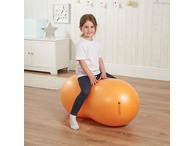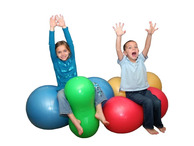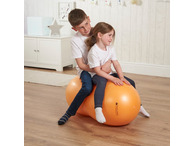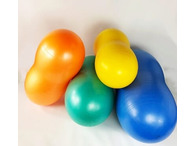Therapy Peanut Balls - anti-burst
SKU: SD058
Burst resistant Peanut Balls for therapy and fun!
Ideal for therapeutic use, especially for those who have problems with balance and coordination. The shape of the peanut therapy ball encourages both children and adults to engage core muscles to build strength and improve posture.
These therapy balls offer greater stability than regular, round therapy balls by limiting movement to forward and backward. Use it as a bench or straddle it for extra stability. BIg enough for a therapist and a child to sit together on the peanut ball.
Available in 4 sizes Yellow Ball 35-40cm, Orange Ball 45-50cm, Green Ball 55-60cm and Blue Ball 65-70cm.
The size quoted above is the maximum size the ball will inflate to (measured from the floor to the highest point of the ball when laying on its side). The peanut balls will still work when inflated less but they will be smaller.
- Products are in compliance with 93/42/EEC as class I Medical device.
- Latex free
- Stopper included
Don't know what size ball will fit your child?
Choosing the correct size
As a quick guide before buying a ball, measure the distance from the userís armpit to the middle finger tip and match this measurement to the height of the ball (within 5cm). This is a good starting point and once you have purchased your ball and inflated it you can follow steps 1 to 3 below to ensure you have the correct ball size.
Sizing
We have laid out some basic guidelines below, however we recommend that you consult with an or occupational therapist or physio with regards to the sizing of your ideal ball.
- With the user straddling the ball on the centre saddle, their weight is evenly distributed and feet are flat on the ground.
- Ideally the knees should be level with the pelvis creating a 90-degree angle at both the hips and the knees with the userís thighs parallel to the ground.
- The head, shoulder and pelvis of the user should be in a vertical line, with no leaning necessary to act as a counter balance to keep them on the ball. The ball can be inflated and deflated slightly to adjust the height - the ball should be firm enough to sit on and should not exceed the maximum recommended size. A fully inflated ball will compress less and will therefore be less stable (making some exercises harder as the ball will tend to roll more easily). Letting a little air out will make increase the rolling resistance giving it more stability.





